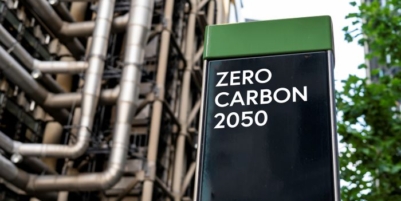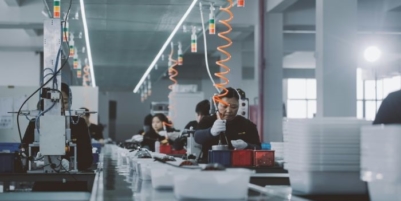-
Nutrivend selects Forterro’s Orderwise to support online expansion and streamline operations - April 11, 2025
-
ARROWXL LAUNCHES AMBITIOUS ZERO WASTE ROADMAP - April 8, 2025
-
THE BCMPA’S NEW CAMPAIGN DRIVES OUTSOURCING SUCCESS IN Q1 - April 7, 2025
-
BLACKOUT TECHNOLOGIES TARGETS TELEMATICS-INTEGRATED MOBILE DEVICE BLOCKING TO COMBAT SMARTPHONE DISTRACTION - April 1, 2025
-
Sparck Technologies awarded Royal designation - March 27, 2025
-
OpenADR Alliance announces first OpenADR 3.0 certified products with EVoke Systems, E.ON Energy and Universal Devices - March 25, 2025
-
Growing fulfilment and contract packer appoints new Managing Director - March 25, 2025
-
When is it time to invest in a WMS? Understanding the key trigger points - March 25, 2025
-
eCapital helps Vantage Recruitment on its journey to financial success - March 24, 2025
-
Hugo Beck Celebrates 70 Years of Packaging Innovation with Open House Events - March 20, 2025
Online fulfilment is facing a new reality; one of frequent and dramatic spikes in demand and this is causing retailers significant challenges in the packing area. How can ecommerce businesses successfully hit these extreme peaks when labour resources are becoming increasingly scarce? By Jo Bradley
According to the latest figures from the UK Office for National Statistics (ONS), online sales as a proportion of all retailing increased to 19.2% in October 2019, up one per cent on figures for October 2018. But this steady progression of online activity is not spread evenly through the year.
Black Friday and Cyber Monday have become notorious seasonal events. The IMRG Capgemini Online Retail Index, which tracks the online sales performance of over 200 retailers, reports a growth rate of +16.4% year-on-year for the 2019 November ‘mega peak’ period. However, this is far from being the only peak.
Christmas and Easter are fairly predictable, but retailers can also face sudden surges in demand as a result of unexpected events as diverse as heat waves, sporting successes, hit TV shows or celebrity endorsements. In fashion, spikes in demand can be even more erratic, triggered by sudden or dynamic discounting to clear stock quickly. And with ever-tighter delivery promises, peaks are no longer measured in weeks or days, but by the hour.
These peaks stress test the whole fulfilment and delivery process and nowhere is this more acutely felt than in the packing area. Constructing boxes, packing, weighing, sealing and labelling manually is a slow process, and few shippers have either the physical space or the available labour to create additional packing stations for what may be only a few days’ work. Finding a flexible labour force, available at short notice, is also becoming increasingly difficult as a result of Brexit. So, how will online retailers cope with the new reality of frequent and dramatic spikes in demand?
The case for greater use of automation in the packing area is compelling. However, simple size-constrained machines using only one-size of box does not cater for the wide variety of products and order sizes experienced by most online retailers. If demand for smaller items to be packed exceeds the capacity of the relevant machine, the shipper has no option but to move up a box size, or two, or three.
Waste not…
The consequences are not good. It is understood that 60% of ecommerce deliveries are by volume at least a quarter composed of bubble-wrap, polystyrene beads or just fresh air. Much of the dunnage is essentially non-recyclable, but without it the damage rate for small items slamming about in large boxes, already high, becomes unacceptable to consumers and creates an ever-bigger returns problem. It has been estimated that an ecommerce item can go through around 50 touch points, or opportunities for damage, compared with around 10 for a bricks & mortar sale.
The excessive use of cardboard is itself a scandal. According to the packaging recycling and reduction group WRAP, between 2014 and 2017 use of paper and card in non-grocery consumer retail increased by 11%, to 934,000 tonnes a year. With the economy effectively flat-lined over this period it is fair to assume that most of this increase was due to the shift to ecommerce – and with oversized packages being commonplace, a large part of this consumption is bound to have been wasteful.
Packaging waste doesn’t play well with consumers. Half (48%) of those in a ‘Which’ survey say that excess packaging is ‘the most annoying thing’ about Internet shopping, and with ‘unboxing’ now being a thing on social media, brands that package orders wastefully expose themselves to significant risk of reputational damage. Excess packaging clogs up the recycling loop, from the consumer’s green bin to recycling plants; it costs shippers money both in materials and in Producer Obligation payments. Oversize boxes fill up roll cages and despatch bays and require more delivery vehicles and drivers to fulfil orders, which has a negative impact on the environment. And with carrier or postal charges typically calculated at least in part volumetrically, the retailer is also incurring excessive shipping costs.
What can be done?
The case for a fast, efficient, economical and secure means of automating the packaging and labelling of online orders is convincing – but how can it be done? Can boxes be individually made to the exact size required for each order, secured, weighed and labelled automatically at speeds capable of efficiently and cost-effectively matching peak volumes? Effectively, could a machine flex to demand, even at volumes of up to a thousand packages an hour? The answer is yes.
Packaging by Quadient – formerly Neopost – has introduced the CVP Everest, a high velocity fit-to-size ‘auto-boxing’ system capable of tailor-making over 1100 ecommerce packages per hour.
The system scans and measures the item, or group of items, to be packed and calculates the ‘best fit’ box shape and size. Material for the box and lid is cut and creased to size, erected around the item(s) and the lid glue-sealed – which is faster and more recyclable than using tape. Parcels are weighed, labelled and away.
This approach addresses the waste problem – cardboard usage typically cut by 20%, and a tight fit eliminates the need for void fill. Total package volumes can be reduced by 50%, maximising the use of the truck or trailer cube and reducing shipping costs and environmental impacts.
More cogently for the hard-pressed fulfilment centre manager, at packing rates in excess of 1,100 per hour the latest machine can potentially replace up to 20 manual packing stations. And for businesses with mid-market volumes a similar machine, the CVP Impack, produces up to 500 boxes per hour and offers just about all the benefits of the CVP Everest.
The business case is impressive. Even operating ‘off-peak’ at well below capacity there is a rapid Return On Investment in the form of material savings, lower shipping costs and labour economies – labour that could be redeployed to other tasks, such as picking. But it is at peak times that the CVP Everest and CVP Impack systems really come into their own, ramping up throughput without any corresponding increase in labour, and minimising the burden on despatch and delivery operations.
By choosing an automated solution to ‘right-size’ ecommerce deliveries, retailers can meet their fulfilment promises, even in the peaks, while respecting the environment, reducing transit damage, and saving money.
More information on Packaging by Quadient’s super-fast CVP Everest and mid-market volume CPV Impack can be found at packagingbyquadient.com
Jo Bradley is Business Development Manager at Packaging by Quadient – formerly Neopost.
































